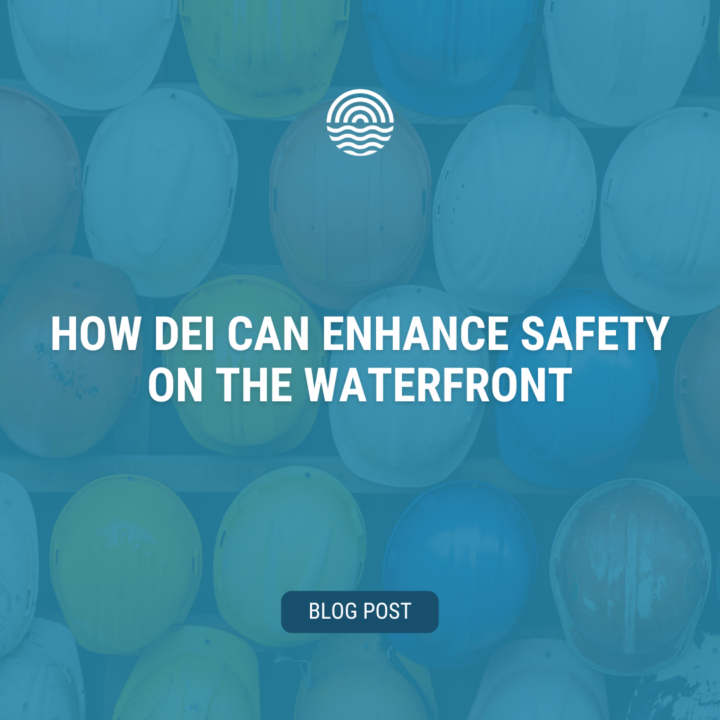
BLOG POST
HOW DEI CAN ENHANCE SAFETY ON THE WATERFRONT
BEYOND GEAR: THE ROLE OF CULTURE IN SAFETY
On the waterfront, safety is non-negotiable.
From steel-toe boots to harnesses and hard hats, every crew member knows the basics: follow the protocols, wear the gear, watch out for your crew. These physical safety measures are a core part of day-to-day life on the job site — and for good reason. They save lives.
But here’s something we don’t talk about enough: Safety isn’t just physical. It’s also cultural.
Because no matter how solid your procedures are, safety breaks down when people don’t feel safe to speak up.
THE HUMAN SIDE OF SAFETY
Even in the most well-equipped workplaces, hazards can go unreported, and risks can go unchecked — not because someone didn’t know better, but because they didn’t feel safe to speak up.
For example:
- A team member who doesn’t feel respected may hesitate to report a hazard.
- A new hire who feels unwelcome may be afraid to ask questions.
- A culture that excludes or isolates people can lead to stress, distraction, and burnout.
- Team members second-guess themselves — or stop trusting one another altogether.
And that’s when accidents happen.
INCLUSION IS A STRATEGY FOR SAFETY ON THE WATERFRONT
This is where Diversity, Equity, and Inclusion (DEI) comes in — not as a buzzword or checkbox, but as a critical part of workplace safety.
When workers feel valued, supported, and empowered to speak up, they’re far more likely to raise concerns, share insights, and look out for one another. Inclusive teams build trust, and trust is a foundation of strong safety culture.
Here’s how inclusive practices can strengthen safety:
- Clear communication: Diverse teams bring different communication styles. Inclusion ensures those differences are respected — and understood.
- Psychological safety: Workers need to know that speaking up won’t lead to judgment or retaliation.
- Representation: When people see others like them in leadership or decision-making roles, they’re more likely to feel a sense of belonging and accountability.
- Feedback culture: Inclusive environments encourage two-way dialogue as opposed to traditional top-down messaging.
BUILD A CULTURE WHERE EVERYONE GOES HOME HAPPY & SAFE AT THE END OF THE DAY
Creating a truly safe workplace means building a culture where everyone can bring their full selves to work and know their voice matters.
Whether you’re running a crew, managing operations, or shaping policy at the leadership level, this work starts with a simple question:
“Do all of our people feel safe — not just physically, but socially and emotionally — to speak up, ask questions, and be heard?”
If the answer isn’t a confident yes, there’s room to grow. And that’s not a failure — that’s an opportunity.
START THE CONVERSATION
Inclusive, respectful workplaces are critical to keeping everyone safe.
That’s because safety depends on trust, and trust is built through inclusion, communication, and a culture where every voice is valued.
When safety and inclusion go hand in hand, teams are stronger, more aware, and better equipped to look out for each other — not just in emergencies, but every single day.
If this message resonates with you, share it with your team or your network. Use it to spark a conversation about what safety really means in your workplace — and how inclusion can make it stronger.
Ready for meaningful change?
We’re here to help. Get in touch with us today to learn how the Waterfront DEI Council can support your ongoing DEI journey.


